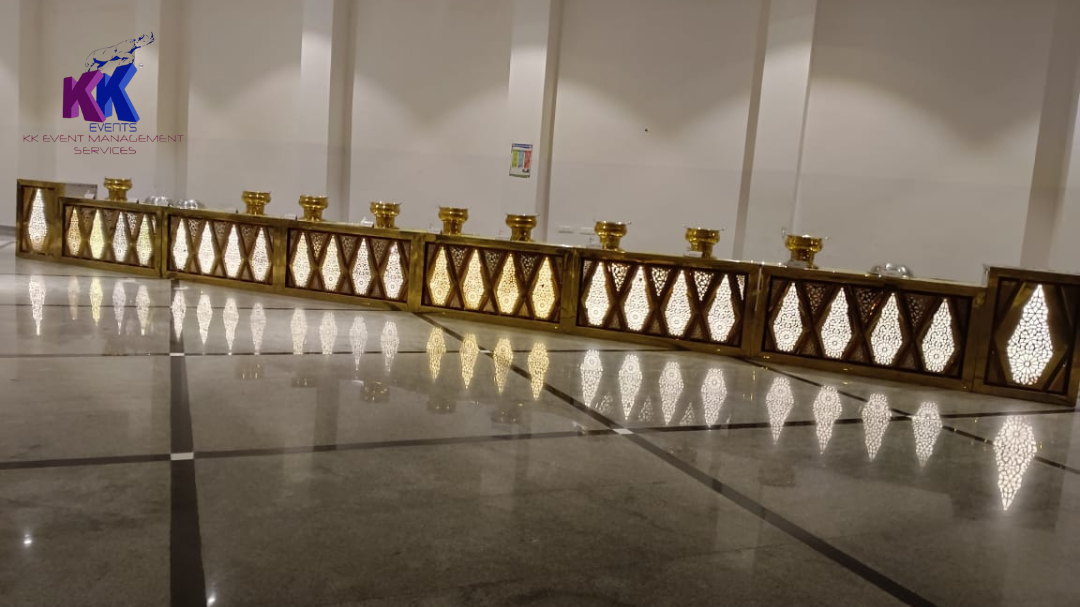In South Indian weddings, the grand feast or “Sadhya” is a highlight of the celebration, offering a spread that delights the senses and pays homage to centuries of culinary tradition. While the main course dishes, like rice and sambar, are central to this feast, the real magic often lies in the array of side dishes that accompany them. These side dishes are not merely add-ons; they play a vital role in balancing flavors, textures, and elevating the dining experience.
In this blog, we will explore why side dishes hold such importance in South Indian wedding buffets and which ones are essential for making the feast unforgettable.
South Indian cuisine is known for its variety, balance, and attention to detail. Each dish, especially the sides, is carefully crafted to complement the main course, creating a harmonious balance of flavors. From tangy, spicy, to sweet, side dishes offer a sensory journey for the palate, enhancing the dining experience with layers of taste and texture.
Why It Matters: Side dishes are essential for creating the full South Indian dining experience. They transform an ordinary meal into a multi-sensory event, satisfying both the taste buds and the heart.
No South Indian wedding buffet is complete without an array of side dishes. These accompaniments not only complement the main dishes but also elevate the dining experience, making the meal memorable for guests. Below are some must-have side dishes that are often seen in traditional South Indian weddings.
The crisp, golden Pappadam is a staple at any South Indian meal. This fried lentil cracker adds a delightful crunch to every bite, providing a textural contrast to soft dishes like rice and curries.
Pickles, known as “Oorugai,” come in a variety of flavors, from tangy lemon to spicy mango. A small serving of these pickles can make a big difference in adding a burst of intense flavor to the meal. They are often paired with yogurt rice or plain rice to enhance taste.
Thoran (in Kerala) or Poriyal (in Tamil Nadu) is a stir-fried vegetable dish, often made with cabbage, beans, or carrots, seasoned with mustard seeds, curry leaves, and coconut. These lightly spiced vegetable dishes add a fresh, healthy element to the meal and balance out the richer curries.
Avial is a mixed vegetable stew cooked in coconut, curd, and mild spices. It’s a must-have in traditional Kerala wedding buffets and is known for its creamy texture and mild, yet flavorful, taste. The combination of vegetables like carrots, beans, and drumsticks offers a nutritious and filling accompaniment.
Pachadi is a type of South Indian raita, typically made with yogurt and vegetables or fruits like cucumber or pineapple, flavored with mustard seeds and curry leaves. This cooling side dish is especially important to balance out the spicier items on the menu.
Rasam is a tangy, soupy dish made from tamarind, tomatoes, and various spices. It acts as a palate cleanser in the meal and is often served alongside rice. Its light, spicy flavor is a refreshing contrast to the heavier curries and sambars.
Banana chips, especially popular in Kerala, are a crispy, fried treat that adds an element of fun and indulgence to the meal. They are served at the beginning of the feast or as a side to munch on between courses.
Why It Matters: These traditional side dishes are an integral part of the wedding buffet, offering balance, variety, and texture to the overall meal. Each dish is carefully chosen to complement the main course and enhance the overall dining experience.
South Indian cuisine is all about balance—balancing the heat of spices with the coolness of yogurt, the richness of curries with the freshness of stir-fried vegetables, and the tanginess of rasam with the sweetness of payasam. Side dishes play a crucial role in maintaining this balance.
For example:
Why It Matters: A well-planned South Indian wedding buffet offers a variety of flavors, allowing guests to experience a balanced meal that satisfies every palate. The interplay between the different side dishes ensures that no two bites taste the same, keeping the meal exciting and enjoyable from start to finish.
In South Indian weddings, the visual presentation of the buffet is just as important as the taste. The variety of side dishes adds color, texture, and vibrancy to the buffet spread. Banana leaves are often used to serve the meal, and the side dishes are carefully arranged in small portions around the main course, creating an appealing visual experience for guests.
The bright hues of pickles, the golden tones of Pappadam, the green of Poriyal, and the creamy whites of Avial all come together to create a visually stunning feast.
Why It Matters: Presentation enhances the overall dining experience. A well-laid-out buffet not only stimulates the appetite but also conveys a sense of abundance and celebration, which is the essence of a South Indian wedding feast.
In South Indian weddings, the feast is more than just a meal—it’s an opportunity to connect, celebrate, and show hospitality. Offering a diverse array of side dishes ensures that there is something for everyone, catering to different tastes, preferences, and dietary restrictions. Guests can choose from a variety of vegetarian, spicy, mild, and cooling side dishes, making the meal enjoyable for everyone.
Moreover, side dishes often carry regional and family significance, adding a personal touch to the wedding buffet. Many families include traditional dishes that have been passed down through generations, making the meal feel more intimate and special.
Why It Matters: The variety and personalization of side dishes make the wedding feast inclusive, allowing every guest to feel cared for and appreciated. The diversity in flavors and textures creates an unforgettable dining experience, leaving guests talking about the meal long after the wedding is over.
Side dishes play an essential role in South Indian wedding buffets, going beyond the main course to enhance the overall flavor, balance, and enjoyment of the meal. From crunchy Pappadam and tangy pickles to creamy Avial and spicy Rasam, these dishes add layers of flavor and texture that create a memorable dining experience. In a culture where food is central to celebration, the careful planning and presentation of these side dishes reflect the heart and soul of the wedding feast.
For couples planning their wedding, paying close attention to the selection of side dishes can elevate the meal from ordinary to extraordinary, ensuring that their guests leave with full hearts and satisfied palates.



Privacy Policy | Terms & Conditions | Cancellation & Refund Policy | Disclaimer Policy


